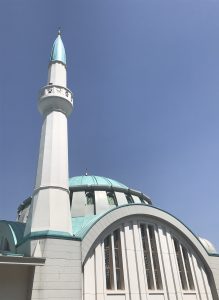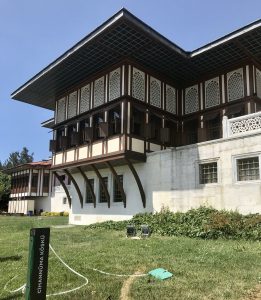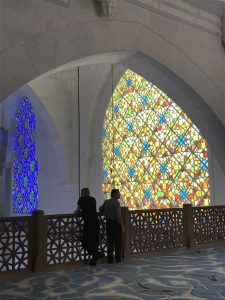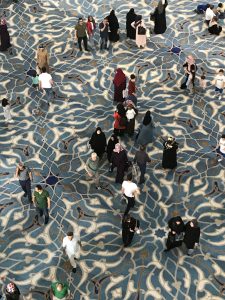“Quite Pine-Filled”
 Traditionally the Asian suburb of Çamlıca was best known for two large hilltop parks. Büyük Çamlıca was familiar to 19th-century visitors as a beauty spot commanding great Bosphorus views and its revival was inspired by the master conservator, Çelik Gülersoy (1930-2003). The views remain matchless, if much more built up, and there’s a great “Ottoman” cafe in which to take tea. The radio and other antennae that had been cluttering the view have all been corralled inside the Çamlıca Kulesi (open daily, TL600, Turks TL225), a vaguely tulip-shaped telecommunications tower that dominates the skyline, especially at night when it is lit up like a Roman candle. There’s a restaurant at the top.
Traditionally the Asian suburb of Çamlıca was best known for two large hilltop parks. Büyük Çamlıca was familiar to 19th-century visitors as a beauty spot commanding great Bosphorus views and its revival was inspired by the master conservator, Çelik Gülersoy (1930-2003). The views remain matchless, if much more built up, and there’s a great “Ottoman” cafe in which to take tea. The radio and other antennae that had been cluttering the view have all been corralled inside the Çamlıca Kulesi (open daily, TL600, Turks TL225), a vaguely tulip-shaped telecommunications tower that dominates the skyline, especially at night when it is lit up like a Roman candle. There’s a restaurant at the top.
Küçük Çamlıca keeps a lower profile. However, it too boasts panoramic views and attractive new buildings that replicate the area around the İftariye, the little kiosk in Topkapı Sarayı where the sultans used to break their fast during Ramadan. Some might find its secluded paths more inviting than those of Büyük Çamlıca.
As you walk on Küçük Çamlıca hill you may stumble upon the modern Çilehane Cami which is associated with the Sufi mystic and founder of the Celveti order, Aziz Mahmud Hüdayı (1541-1628). The grounds contain a small stone building said to be the çilehane (secusion cell) in which the holy man lived. He is buried in Üsküdar and his tomb is a site of pilgrimage.
mystic and founder of the Celveti order, Aziz Mahmud Hüdayı (1541-1628). The grounds contain a small stone building said to be the çilehane (secusion cell) in which the holy man lived. He is buried in Üsküdar and his tomb is a site of pilgrimage.
But these days the main reason most people will come to Çamlıca will probably be to visit Çamlıca Cami, the enormous, six-minareted mosque that bestrides Büyük Çamlıca and is visible from much of the city. Opened in 2019, it is currently the largest mosque in Turkey, able to welcome 63,000 worshippers at a time. The design, by two female architects, has been criticised for being Sinan-lite. However, the higher you climb in the galleries, the more impressive does the mosque become. The complex includes a museum and art gallery, and there’s a pleasant cafe in the grounds.
The parks and mosque aside, you might also like to look for what was once the Çamlıca Girls High School, actually in the Acıbadem district. This building was originally planned in 1913 as a private home by Vice Admiral Ahmed Ratıp Paşa who commissioned it from the architect, Kemaleddin Bey (1870-1927). Ahmed Ratıp Paşa played a role in the creation of the Hejaz railway intended to link the existing line from Constantinople to Damascus to Mecca and Medina but after being accused of taking bribes he was dismissed. In 1938 the building was turned into a girls’ high school. It became redundant when a purpose-designed school was built next door and now stands empty and unvisitable.
 Eating and drinking
Eating and drinking
The reconstructed Ottoman houses on both the hills contain pleasant reasonably-priced cafes and restaurants which serve up great views but absolutely no alcohol.
Transport info
You can get to Çamlıca by bus from Kadıköy although a new Metro line will have a stop for visitors to the mosque; across the road from it buses already wait to carry worshippers back down to the town centre. You can also take the Metro from Üsküdar to Kisıklı and walk up through Küçük Çamlıca and Büyük Çamlıca to the mosque.
Nearby areas




